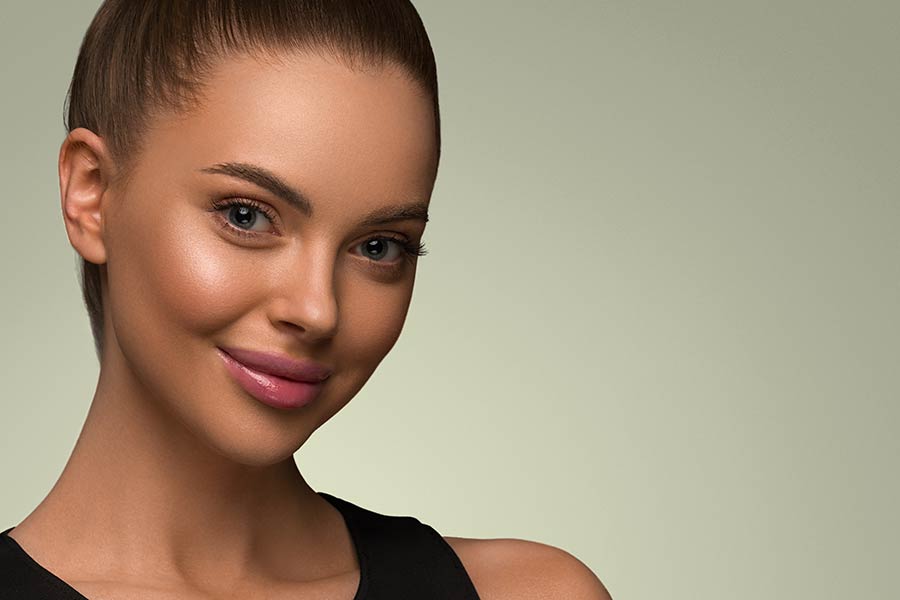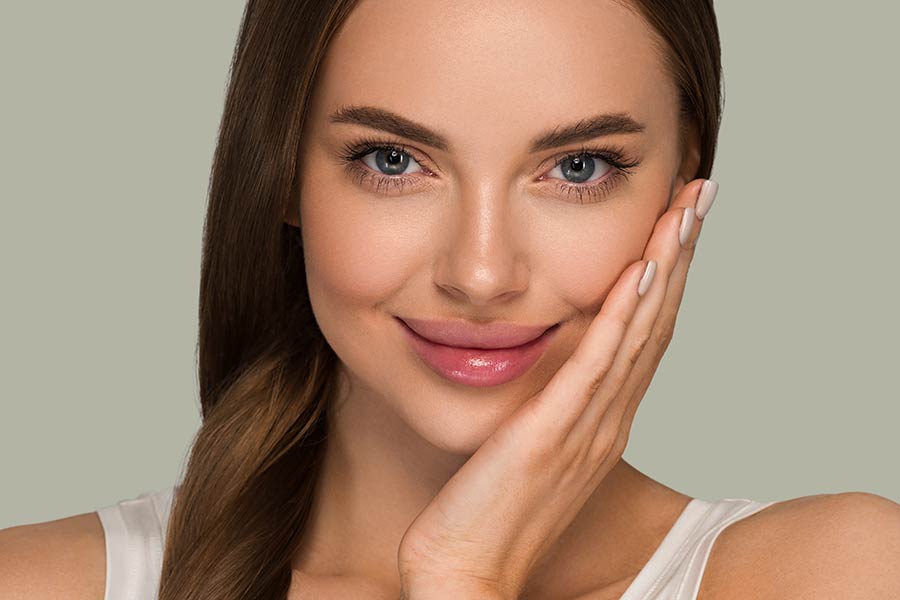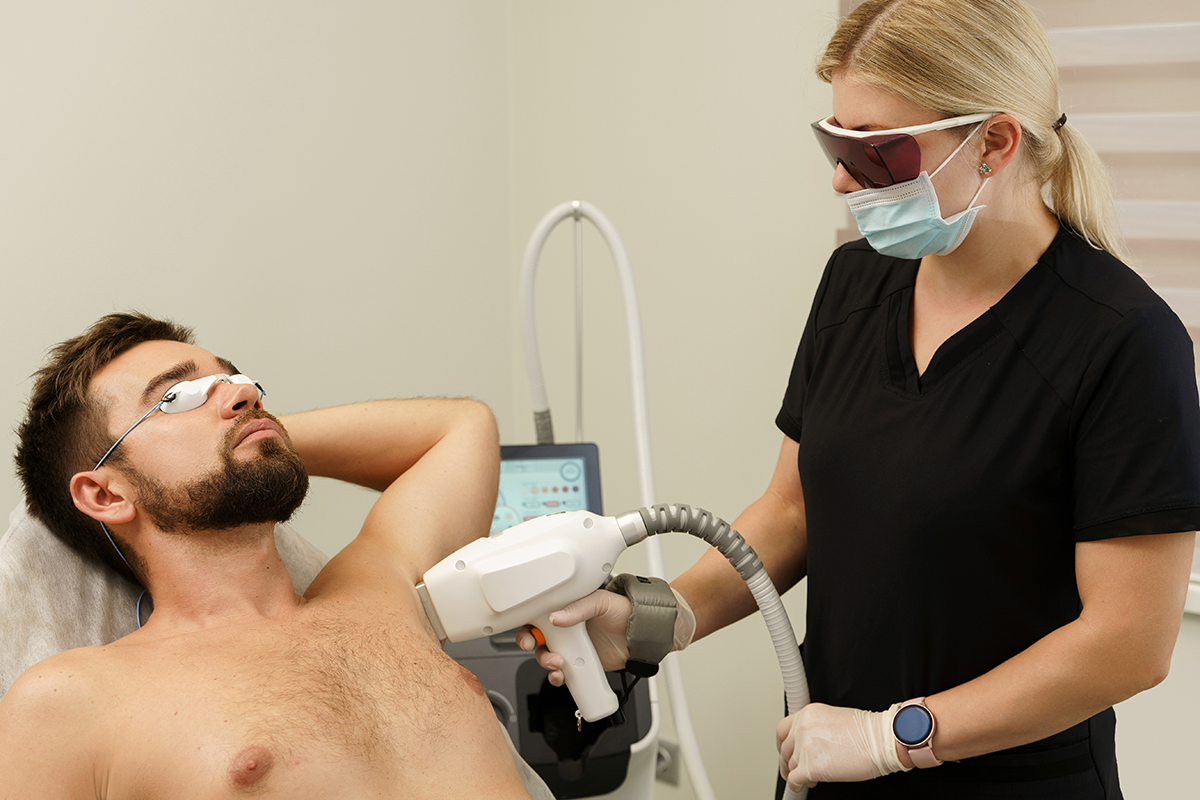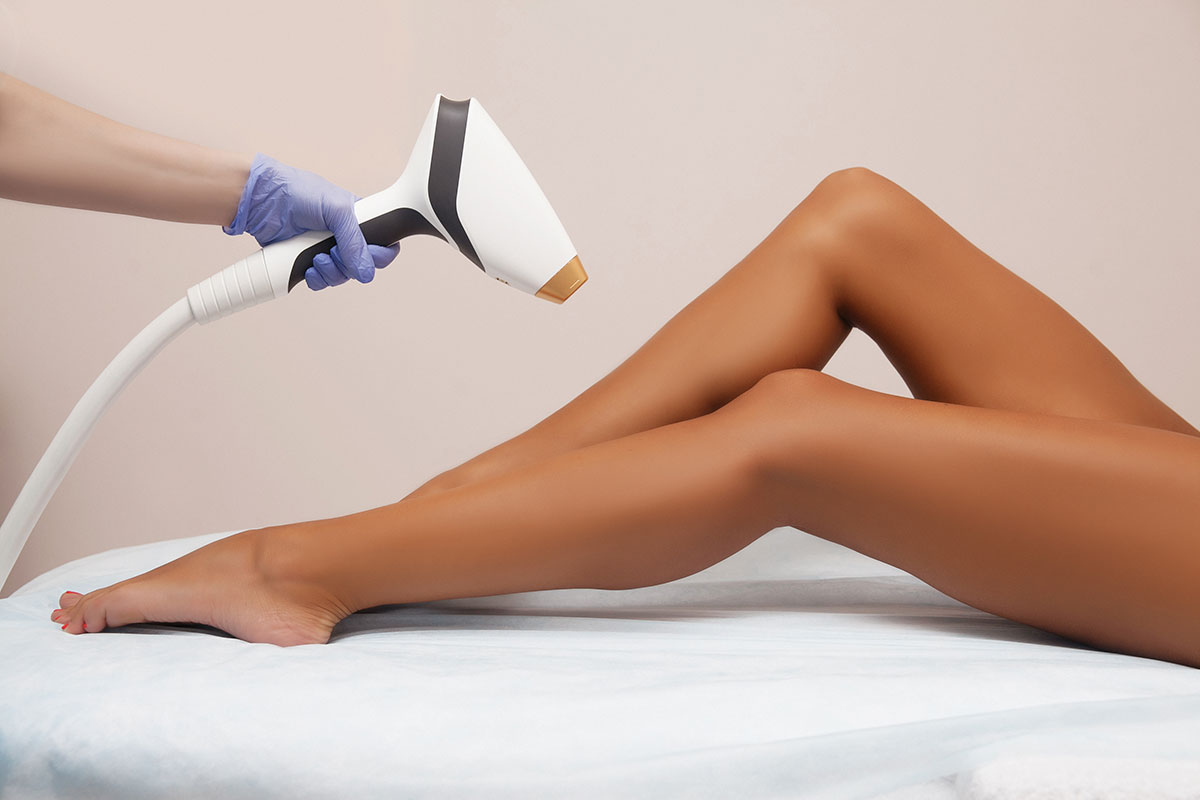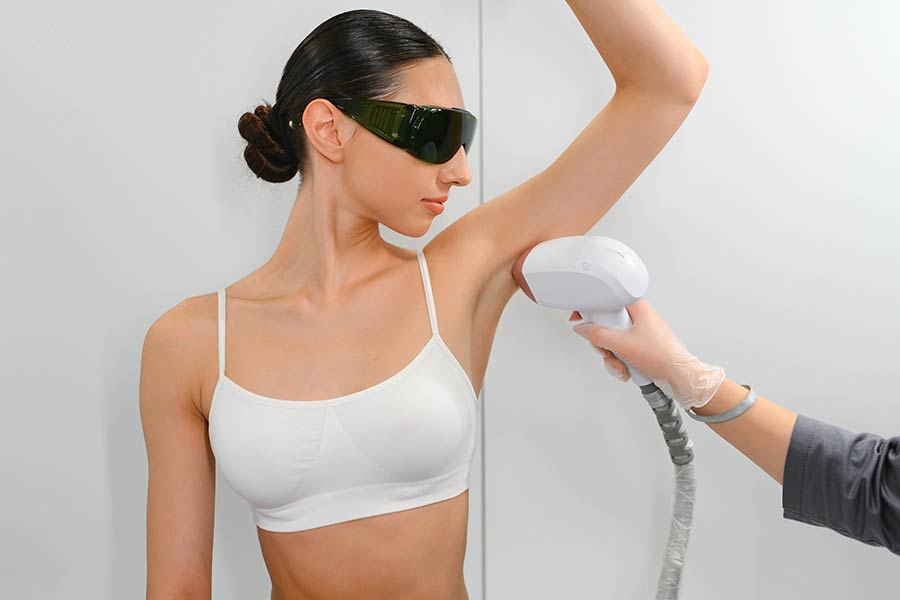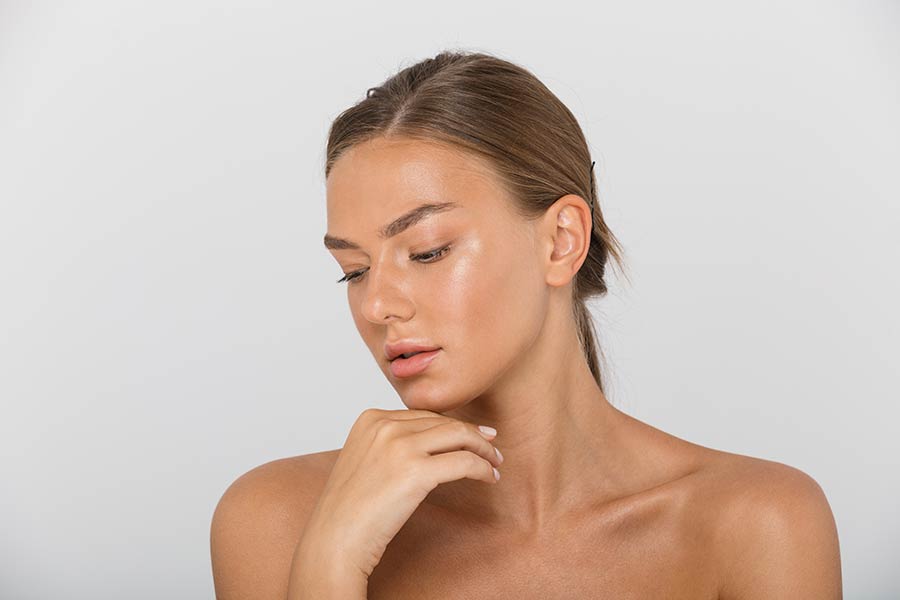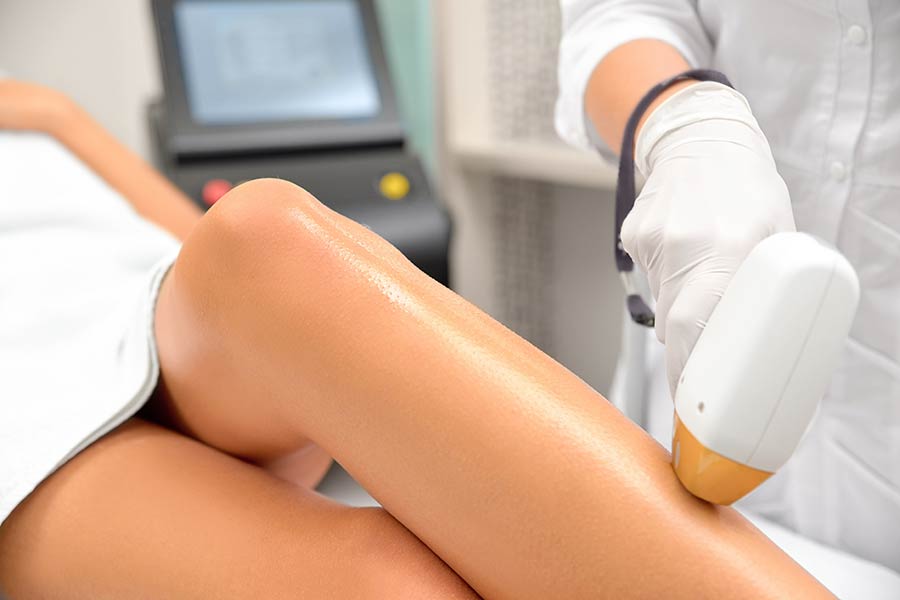Dermal fillers in the forehead have become a game-changer for those seeking a non-surgical solution to combat signs of aging. This revolutionary approach, evolving significantly since its inception, offers a quick and effective way to smooth out wrinkles and restore volume, turning back the clock on the forehead's appearance. Unlike traditional methods that often required extensive downtime, modern dermal fillers provide immediate results with minimal interruption to daily life. They stand as a testament to advancements in cosmetic procedures, offering a blend of convenience, efficiency, and visible enhancements. With expert application, these fillers can rejuvenate one's look subtly yet significantly, making them a popular choice among individuals aiming for a fresher, more youthful visage.
Key Takeaways
- Dermal fillers can be an effective solution for reducing the appearance of forehead wrinkles, offering a smoother skin texture.
- It's crucial to understand the procedure, including what to expect during and after treatment, to set realistic expectations.
- Being aware of potential side effects is important for making an informed decision and preparing for the possibility of temporary discomfort or other reactions.
- Choosing a qualified practitioner is paramount; their expertise significantly influences the success and safety of the treatment.
- Cost considerations should be part of your decision-making process, as treatments vary in price and may require multiple sessions.
- Exploring alternatives and complements to dermal fillers can provide a more comprehensive approach to addressing forehead wrinkles and overall skin health.
Understanding Forehead Wrinkles
Causes Explained
Forehead wrinkles often tell the story of our lifestyle, age, and genetics. Aging is a key player in their development. As we grow older, our skin loses elasticity. This makes it easier for lines to form on our forehead.
Sun exposure also plays a significant role. It speeds up the aging process by breaking down collagen faster than usual. Collagen is what keeps our skin looking firm and young.
Genetics can determine how soon or late these wrinkles appear. Some people might notice them earlier than others because of their family history.
Repetitive facial expressions contribute to dynamic lines. Every time we frown or raise our eyebrows, we etch a little more into the canvas of our skin.
Over time, collagen depletion leads to static lines. These are the wrinkles that stay put, even when our face is at rest.
Static vs Dynamic Lines
Static lines are those wrinkles you see even when your face is not moving. They are always there, marking their territory on your forehead.
Dynamic lines, on the other hand, make an appearance with every smile or frown. They are like performers that only show up when the face is in action.
Understanding the difference between static and dynamic lines is crucial. It helps doctors decide on the best treatment approach. For instance, dermal fillers might be more suited for static lines while Botox works wonders on dynamic ones.
Introduction to Dermal Fillers
How Fillers Work
Dermal fillers are injected beneath the skin. They add volume and smooth out lines on the forehead. This process directly tackles the concern of forehead wrinkles discussed earlier. Some fillers also stimulate collagen production. Collagen is a protein that makes our skin look youthful. However, it's important to note that fillers are temporary solutions. They are biodegradable and will eventually be absorbed by the body.
The effect of these injections can be seen almost immediately. Yet, their lasting power varies from person to person. It typically ranges from six months to two years.
Types of Fillers
There are several types of dermal fillers available. Here are three common ones:
- Hyaluronic acid (HA): HA is naturally found in our skin. It helps keep the skin hydrated and voluminous. HA fillers are popular for their natural-looking results and minimal side effects.
- Calcium hydroxylapatite (CaHA): CaHA is a mineral-like compound found in bones. It's thicker than HA and used for deeper lines and wrinkles. CaHA also promotes natural collagen production.
- Poly-L-lactic acid (PLLA): PLLA is a synthetic filler that stimulates the skin to produce more collagen over time. The results appear gradually but can last up to two years.
Each type has unique properties and uses. For instance, HA is often preferred for its immediate results and reversibility with an enzyme called hyaluronidase if needed.
For forehead applications, it's crucial to choose fillers approved by the FDA or equivalent authorities in other countries. Not all fillers are suitable or approved for use on the forehead due to concerns about safety or effectiveness in this area.
Dermal Fillers for Forehead Lines
Efficacy and Safety
Patients often see great results with dermal fillers in smoothing forehead lines. Most people report high satisfaction, noting visible improvements. Success rates vary but generally are high among those who choose this treatment.
Side effects can happen but are usually mild. People might notice swelling, bruising, or redness. These symptoms typically last a few days to a week. It's rare to have serious complications.
The key to safety lies in the injector's hands. An experienced professional knows exactly where and how much filler to use. This expertise minimizes risks and ensures the best outcome.
Best Fillers for Forehead
Not all fillers work the same for everyone. Hyaluronic acid fillers stand out for their versatility and reversibility. They can easily smooth out lines while keeping a natural look.
For deeper forehead wrinkles, poly-L-lactic acid fillers offer a good solution. They help rebuild collagen, giving long-lasting results.
Choosing the right filler isn't a one-size-fits-all decision. A personal consultation is vital. It helps determine which filler matches your needs best.
The Procedure Explained
Steps Involved
The journey to smoother forehead lines begins with a detailed consultation. Here, a specialist assesses your skin and discusses your aesthetic goals. They create a personalized treatment plan tailored just for you.
Next comes the actual injection process. It starts with numbing the forehead area to ensure comfort. Then, using fine needles, the specialist strategically places the dermal fillers beneath the skin. Precision is key here, as it affects the final look.
Finally, there's a post-treatment observation period. This allows the specialist to monitor for any immediate reactions to the fillers. Patients are given care instructions and can ask any lingering questions during this time.
Recovery Time
Most people find they can jump back into their daily routines right after treatment. It's one of the perks of choosing dermal fillers for forehead lines.
However, some might notice mild swelling or bruising at the injection sites. These usually fade away within a few days. To speed up recovery, it's wise to keep these areas clean and avoid touching them too much.
Experts also recommend staying away from heavy lifting or intense workouts for 24-48 hours post-treatment. This helps ensure the fillers settle properly without shifting.
What to Expect
Immediate Aftercare
After the procedure, immediate aftercare is crucial for healing and achieving the best results. It's wise to apply ice to the treated area. This helps reduce swelling and discomfort. Use a clean cloth to wrap the ice and gently place it on your forehead.
You should avoid rubbing or pressing the treated area. This action can move the filler to unwanted areas, affecting the outcome. Be gentle with your skin.
It's also recommended to sleep with your head elevated on the first night. This position helps minimize swelling. Use a few pillows to prop up your head comfortably.
Long-Term Maintenance
The effects of dermal fillers in the forehead can last from several months to a couple of years. The average duration depends on factors like the type of filler used, your lifestyle, and how your body metabolizes the filler.
Follow-up appointments are important for maintaining your desired look. They allow your practitioner to assess how your body is responding and make any necessary touch-ups. This ensures that the fillers continue to meet your aesthetic goals.
A good skincare routine can enhance and prolong the results of dermal fillers. Use products that keep your skin hydrated and protected from the sun. Regular use of sunscreen, moisturizers, and antioxidants supports skin health and filler longevity.
Potential Side Effects
Common Risks
After learning about what to expect during a dermal filler session for the forehead, it's crucial to understand the side effects. Dermal fillers, while generally safe, come with their share of risks. Infection is a possibility whenever the skin barrier is breached. Though rare, it demands prompt attention. Another concern is asymmetry, where one side may not mirror the other perfectly after treatment. This usually results from uneven product distribution or varying responses in treated areas.
Lumps might also form under the skin. These can often be felt but are not always visible and might require additional treatment to resolve. A more severe but rare complication is vascular occlusion. This happens when the filler blocks a blood vessel, potentially leading to tissue damage if not addressed immediately. However, such serious complications are infrequent with skilled injectors who understand facial anatomy deeply.
Minimizing Complications
The key to reducing risks lies in choosing a qualified and experienced injector. Their expertise in facial anatomy significantly lowers the chances of complications. They know where and how much filler to inject for optimal results while keeping safety a priority.
Following pre- and post-treatment instructions also plays a vital role in minimizing complications. These guidelines help avoid situations that could lead to infection or negatively affect the outcome of your treatment. For example, avoiding certain medications or supplements before treatment can reduce bruising.
If any unusual symptoms develop, reporting them promptly to your injector is crucial. Early detection of potential issues allows for quicker interventions, which can prevent more serious problems from developing.
Choosing a Qualified Practitioner
Importance of Expertise
Choosing a practitioner with expertise in dermal fillers is crucial. Their experience directly links to better outcomes and a reduced risk of complications. This is especially true for treatments in sensitive areas like the forehead.
Experts understand facial anatomy deeply. They know where to inject and how much product to use. This knowledge minimizes risks and ensures the filler complements your natural features.
It's vital to select someone specifically trained in dermal fillers. These professionals have a thorough understanding of different filler types and their best applications. They can tailor treatments to meet individual needs, ensuring optimal results.
Injector's Impact on Results
The technique used by an injector significantly influences filler distribution and aesthetics. Precise injection methods ensure the filler blends seamlessly with your facial structure, enhancing your appearance without looking overdone.
An injector's aesthetic judgment plays a crucial role in achieving natural-looking results. They assess your facial features and decide on the best approach to enhance them subtly. Their expertise allows them to balance enhancements with your overall look, maintaining authenticity.
Experienced injectors make a big difference in managing expectations and outcomes. They provide realistic previews of results, helping patients make informed decisions. Their ability to predict and adjust treatments leads to higher satisfaction rates among clients.
Cost Considerations
Factors Influencing Price
The price of dermal fillers in the forehead can vary widely. Several key factors play a role in determining the final cost. First, the type of filler used is crucial. Different brands and materials come with varying price tags. Next, the injector’s expertise significantly impacts the price. Highly skilled professionals often charge more for their services. Lastly, where you get the procedure done affects the cost too. Prices tend to be higher in large cities due to increased demand and operational costs.
Another important factor is the amount of filler needed. More severe forehead lines require more product, increasing the overall expense. Remember, investing in quality and safety should be a priority. Opting for cheaper options might save money upfront but can lead to dissatisfaction or health risks later on.
Filler Quantity and Location
The extent of forehead lines directly influences how much filler you will need. Deep creases demand more product for effective smoothing. However, it's not just about filling wrinkles; strategic placement is key for achieving a natural lift and optimal results.
Customization is at the heart of every treatment plan. Professionals assess each person’s anatomy and goals before proceeding. This ensures that fillers enhance your features in a balanced way, respecting your unique facial structure.
Alternatives and Complements
Comparing Fillers and Botox
Dermal fillers and Botox serve different purposes in enhancing forehead appearance. Fillers add volume, making them ideal for deep lines or areas needing plumpness. Botox, on the other hand, relaxes muscles. This action smooths out wrinkles caused by facial expressions.
For static lines that are visible without movement, fillers are often the go-to solution. Dynamic lines, which appear during facial expressions, respond well to Botox. Some people choose to combine both treatments. This approach targets various types of forehead lines for comprehensive results.
Home Remedies
Before considering professional treatments, some seek home remedies as a first step. Key practices include:
- Staying hydrated
- Applying sunscreen daily
- Using moisturizers regularly
These measures can prevent new lines from forming and may slightly improve existing ones. Facial exercises are another popular method. They aim to strengthen muscles under the skin, potentially reducing line appearance.
However, home remedies have their limitations. They cannot replicate the immediate and noticeable effects of dermal fillers or Botox. For deeper lines or more significant signs of aging, professional treatments offer more dramatic improvements.
Closing Thoughts
Dermal fillers offer a promising solution for smoothing out forehead wrinkles, giving you back that youthful look with minimal fuss. You've seen how they work, what the procedure involves, and what to expect after. Side effects are rare, but being aware means you're prepared. Choosing the right practitioner is crucial; it ensures your safety and maximizes results. While cost is a factor, think of it as investing in your confidence. And remember, there are always alternatives if dermal fillers aren't your cup of tea.
Ready to take the next step? Talk to a qualified professional today and see how dermal fillers can rejuvenate your appearance. It's your face, your rules. Make sure you're making decisions that make you feel confident and radiant.
Frequently Asked Questions
What are dermal fillers used for in the forehead?
Dermal fillers are injected into the forehead to smooth out wrinkles and fine lines, giving the skin a more youthful appearance.
How do dermal fillers work to reduce forehead lines?
Dermal fillers add volume beneath the skin's surface, which diminishes the appearance of lines and wrinkles by plumping up the area.
What should I expect during a dermal filler procedure for my forehead?
Expect a quick, minimally invasive procedure. A specialist will inject the filler into targeted areas on your forehead with minimal discomfort.
Are there any side effects of using dermal fillers in the forehead?
Yes, potential side effects include temporary redness, swelling, bruising, and less commonly, infection or allergic reactions at the injection site.
How do I choose a qualified practitioner for dermal fillers?
Look for a licensed professional with specialized training in cosmetic procedures and a proven track record of successful dermal filler treatments.
What are some alternatives to dermal fillers for treating forehead wrinkles?
Alternatives include Botox injections, laser treatments, microneedling, and topical creams that may also help reduce the appearance of forehead wrinkles.
How much do dermal fillers for the forehead typically cost?
Costs vary widely depending on location, practitioner expertise, and the type of filler used but generally range from several hundred to a few thousand dollars per treatment session.



